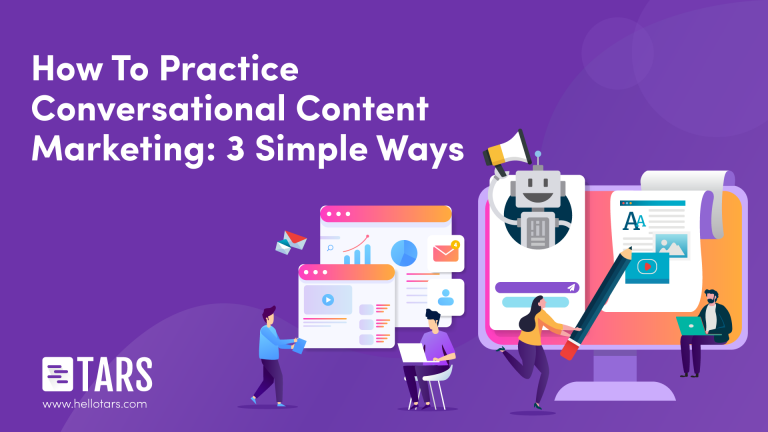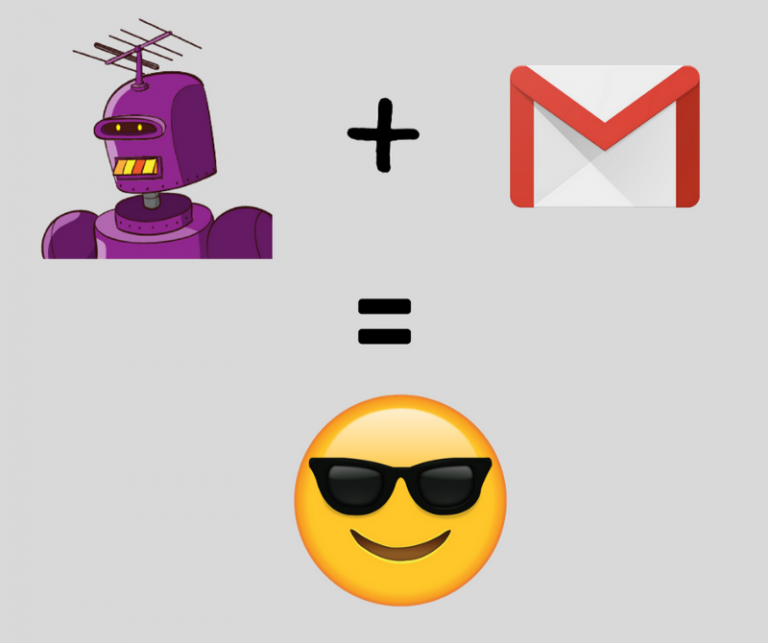Using Conversational Marketing for Lead Generation

Pair chats with inbound and social to boost engagement, shorten sales cycles, qualify leads, and let the robots do the hard work.
What place does conversational marketing have in your lead generation efforts?
While inbound attracts leads and social keeps you top of mind, it’s conversational marketing that’s going to casually nudge prospects through your funnel and build deeper relationships.
Adding this tool to your marketing strategy can shorten sales cycles and grow your business, but only if you do it right.
So in this resource, you’ll learn:
- What conversational marketing is
- Why it works
- How to incorporate it in your lead generation efforts
You may already be communicating with leads via email or social, but can your SMB answer questions in the middle of the night?
Or be around for every website visitor 24/7, no matter where they live?
Large enterprises have the staff to respond to leads in real-time. But even they’re turning to automation to improve communication with their audience and close more sales.
Conversational marketing lets your business do so easily and affordably.
What is conversational marketing?
Also known as chat marketing and conversation marketing, conversational marketing is the ability to have one-on-one chats with your target audience across all your communication channels in real-time so that you can improve the lead generation process while shortening the sales cycle.
You can certainly employ an army of representatives to interact with your global audience, in every time zone, on every platform.
Or you could take incorporate the use of AI chatbots, as part of your marketing arsenal, to help do this for you.
Essentially, you can use chatbots to engage with your leads using super-targeted messages and prepared responses created by your team.
These conversations not only happen immediately, they can start and finish at different times, on different channels, seamlessly, as if they were part of one open dialogue.
The information from your customers can then be housed in a knowledge base, helping to improve future customer interactions by improving the “intelligence/knowledge” of your chatbot. This allows your chatbot to be truly interactive and engage with your leads (unlike static forms) by providing relevant answers to their questions.
This live, interactive chat can happen anywhere your leads want to communicate with your brand, such as:
- On your website’s homepage or its various landing pages
- Social media
- SMS texts
- Messenger apps like WhatsApp, Slack, and Facebook Messenger
Conversational marketing is customer-centric and gives leads a way to interact with your brand on their time and on their grounds.
The actual term “conversational marketing” was created by Dave Gerhardt, CEO at Drift, and he says conversational marketing should be:
- Immediate, and responses should happen in real-time
- Scalable so you can interact with more leads
- Focused on engagement and providing use for customers
- Personalized and tailored to where leads are in your funnel
- Data collectors for customer insight and feedback
Though this outreach puts the ball in your prospect’s court, the upsides to conversational marketing will be well worth the setup.
The Benefits of Conversational Marketing In Lead Gen
Conversational marketing makes it easier to speak one-on-one with your target audience using an automated chat interface.
The benefits of having this two-way connection mean you can:
Improve conversion rates for lead capture. Some leads may sign up for your email list via a lead form, others follow you on social, and many never do either. But even people who shy away from contact forms are likely to interact with a chatbot.
That’s because unlike static pages, a conversational landing page (a landing page with a chatbot) has the ability to engage with prospects. Instead of having to wait for someone to contact them or an email with more information, a chatbot can answer many initial questions a prospect may ask. In turn, as long as your chat is intuitive and responsive, you’re much more likely to grab a visitor’s data and maybe even their business.
Score better leads. Train your chatbots to pre-qualify leads and more ideal prospects will get through the gates. A chat interface is around 24/7 to do this so your agents can devote more time to better quality leads during their 9 to 5.
Increase customer satisfaction. As we previously mentioned, chatbots enable customers to receive answers to their questions in real-time as opposed to waiting for a representative to get back to them.
In cases where the question can’t be answered, a chatbot can route visitors to the proper source or in some cases getting answers to a prospect or customer immediately has made the ability to scale reach to unprecedented levels.
Shorten sales cycles and increase conversions. When leads don’t have to fill out a capture form or wait to get added to an email list, interactions with your brand happen immediately and not days later.
Hot leads receive real-time assistance to complete sales; new leads don’t have to search around for information when it’s curated for and presented to them via helpful bot.
You’ll even have the ability to reduce friction points, cross-sell, and upsell using data from leads about previous interactions, or items frequently purchased based on their viewing.
Gain customer insight naturally. Since chat interfaces on your website, messaging apps, social media, etc. all keep a record of interactions, you’ll have valuable data to use in your lead gen efforts.
With casually programmed conversations, your leads will give up intel about why they visited your site, how they want to use your products, their pain points, product features they need or aren’t fond of, and more.
Each lead interaction thereafter can then be customized and optimized using this data.
Chat interfaces can be personalized to give each lead exactly what they need at their specific point in their buyer’s journey.
But does that mean you have to completely wipe out all your lead capture forms to use conversational marketing?
Definitely not.
Conversational marketing is just another tool in your lead gen toolkit.
It’s easy to incorporate a chat interface with your other strategies so they work even better together.
How to Use Conversational Marketing
The goals of conversational marketing are the same as any other lead gen tactic: capture lead, qualify lead, and connect to make lifelong customers.
Conversational marketing speeds up the process using automated chat.
New technologies let chatbots have more natural, genuine conversations with leads, but you’ll need to create the scripts, monitor their effectiveness, and analyze the data you collect to optimize future interactions.
Here’s a basic primer on how to add conversational marketing to your lead gen strategy:
#1. Capture Leads Where they Hang Out Most Often
Many brands add chatbots to their website and messaging apps because:
Chatbots On Your Website Provide Answers
Customers want to solve problems themselves if they’re able to. In fact, 70% of customers expect some form of self-service application (such as a knowledge base, wiki, interactive FAQ, or chatbot).
A chat interface on your website engages visitors by providing them with valuable information or steering them towards the next round of your sales funnel. In fact, a conversational landing page can typically convert 2 – 3x higher than traditional landing pages.
Part of that has to do with the fact that chatbots are mostly looked on favorably as a survey of over 5,000 customers from six different countries shows:
- Just 11% of people view chatbots negatively
- 38% of people have a positive perception of chatbots
What’s even better is research says 65% of consumers feel good about themselves — and a company — when they can resolve an issue on their own without talking to a live person.
And if they have hesitations, your chatbot may give them the answer they need to move forward.
Chatbots In Your Messaging Apps (like WhatsApp, Slack, Facebook Messenger, etc.) Engage Leads
The Harvard Business Review says mobile messaging apps “provide a continuous thread between customers and brands.”
And that’s because your leads are already there:
- Many users spend more time in messaging apps than on the most popular social media networks.
- Over 2 billion messages are exchanged between companies and consumers each month using Facebook Messenger alone.
Since 53% of over 12,000 people said they’re more likely to shop with a brand they can message directly, it’s in your best interest to set up automated chat on these channels.
When HubSpot experimented with content offers via Facebook Messenger, they earned 2.5 times the open rates and six times the number of clicks compared to email.
Your conversational messages can engage, or provide immediate answers, depending on the keywords and thought patterns you program.
Once you determine where you’d like to add your chat interface, figure out your game plan.
#2. Time Your Interactions Wisely
Rather than immediately popping up on-site, think about the most effective chatbot prompts and uses that won’t annoy your visitors.
Chatbots deserve a place on:
High-intent pages. Leads landing on pages like pricing, services, and bottom-of-funnel landing pages have a higher chance of working with you or buying your product.
Since leads will likely have specific questions about this information, your chatbots should be well-versed on FAQs, pricing structures, which services suit their needs best, and more answers to common hesitations.
You can even use your chatbots to schedule an appointment or follow-up call with a representative, or route leads to sales reps on a rotating basis.
High-traffic pages, including homepages, blog posts, landing pages with videos, etc., build brand awareness and increase your trust and authority with leads.
Chatbots here should offer leads additional value, such as:
- Complementary content and information
- Promotions for events, products, and subscriber-only content
- FAQs, demos, or a testimonial page
They can also be used to qualify leads or route them to the appropriate departments.
Prompts in messaging apps should be programmed to answer common questions, troubleshoot problems using a knowledge base, and link to relevant content.
And all these messages must be in line with your brand’s voice.
#3. Use Every Interaction to Show Off Your Brand’s Unique Personality
Your chatbot will need a specific flow chart of questions and approved responses.
So take this opportunity to extend your killer copywriting and reinforce your brand’s signature personality, tone, and messaging during these prompts.
Use language, emojis, gifs, memes, and images that resonate with your target audience to humanize your interactions.
Once your leads see you’re making the buying process fun, you’ll build a rapport and creatively capture all the data you need to push them in the right direction.
Keep your interactions short, helpful, and conversational.
Remember, every conversation should add value: for both your lead getting the information and your team gaining intel to add to your CRM.
#4. Give Chats Context Using Your CRM Data
The more you know about your lead — and how to make their life better — the more inclined they’ll be to listen to you.
That’s why your chatbots need access to the data stored in your CRM.
Most businesses rely on a solid CRM to manage customer insights, nurture and develop relationships, and tell them where leads are in their buyer’s journey.
Pairing your chat interface with your CRM database gives context to every automated conversation and makes them come off as more personal, as if the chatbot already knows how your lead is growing and developing.
Your chatbot will be aware of all relevant shared information between you so leads pick up right where they left off in your funnel.
Just like you wouldn’t ask for next-level data on your first interaction, your chatbot won’t suggest top-of-funnel content to existing customers.
Let’s say your lead downloads your free content offer, for example.
Your chatbot won’t suggest they download this again, but will nudge them to follow through on your CTA, promote other relevant content, or recommend related products.
This personalized content curated for each user based on their relationship with your brand will give them the confidence they need to take the next step — all via chat.
Combine the data your chatbot collects with the data in your CRM and you’ll be able to optimize your messaging to connect with even more leads.
#5. Optimize with Feedback
Learning from your past interactions is fundamental for every lead gen strategy, and conversational marketing is no different.
After setting up your chat interface, you’ll want to know if leads are doing what you want them to accomplish via chat, and if they’re receiving the information they’re seeking quickly and effortlessly.
You can survey leads directly to get insight as to whether their interactions with your chatbot was helpful, or you can check your data.
Most chatbot dashboards give you ways to measure the effectiveness of your conversational marketing, such as stats for:
- Total leads captured, including new and return visitors
- Chat session durations
- User engagement rates
- Qualified conversions
- Error triggers
- Revenue generated as a result of conversations
See which avenues your leads are using most and make changes to your strategy or your chat prompts/responses to get the most out of your conversations.
Your Lead Generation Needs Conversational Marketing
Conversational marketing isn’t the only lead gen strategy your marketing team needs to implement, but it will help you reach more qualified leads when added to your other efforts.
It’s easy to integrate a chat interface with your existing inbound to capture data and provide leads with information they need to complete their buyer’s journey.
So to find the best one, determine the data you want to collect, how you want your leads to use your chatbots, and whether the options offered by different companies fit your CRM.
Then just keep the conversations going.
Josh Brown is part of the marketing team at Helpjuice. Helpjuice provides easy-to-use and fully customizable knowledge bases designed from the ground up to help you scale your customer support and collaborate better with your team.
Recommended Reading: Check Out Our Favorite Blog Posts!

How To Practice Conversational Content Marketing: 3 Simple Ways

How to use Email Campaigns to promote your bot?

Our journey in a few numbers
With Tars you can build Conversational AI Agents that truly understand your needs and create intelligent conversations.
years in the conversational AI space
global brands have worked with us
customer conversations automated
countries with deployed AI Agents








